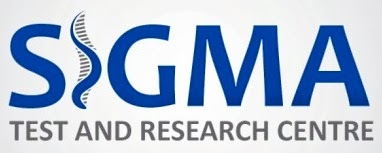The servicing of a frequent
examination routine is important in so many different places of market. Visual
Inspection brands allow for the immediate evaluation of circumstances which are
necessary to observe for their current and ongoing protection.
Discovering state-of-the-art
visible examination techniques for market uses is becoming very important in
various areas for better QC and information purchase along with information
research. These types of techniques are a perfect device to have so you can
management as well as check the in-sight perspective and commercial techniques
on the manufacturer ground. These innovative techniques are looking for an
extensive use in both technological as well as in the commercial group for
servicing of the features or inspection of components and equipment. Nondestructive
Testing is a selection of various analysis methods which are used in market and
technology for analyzing the qualities of a element, content or program. These
methods have to create sure that there should not be any harm to the content
being examined. This is because of the purpose that the products do not get
customized while methods are conducted on them. The methods are extremely
useful and conducted by professionals and qualified professionals. They can
preserve a lot of time and initiatives invested on item assessment, analysis
and problem solving.
Visual Inspection is one of the most commonly used
Non-Destructive Testing methods for the recognition of discontinuities before
they cause major problems, e.g. inadequate welding, area problems, deterioration
sets, general condition, deterioration, obstructions and foreign materials. It
means the inspection of equipment and components using a mixture of human
feelings such as perspective, hearing, touch and fragrance. Visual Inspection
is sometimes carried out together with devices such as a low power magnifier,
boroscopes, fiberscopes, video borescopes, camera techniques and automatic
spider techniques.
The more common types of visible
examination brands can be found on electric gadgets. This convenient equipment
analyze brands, or PAT brands, expose the position of a system as to its safe
utilization as well as the recognition number and the schedules of the present
examination along with the next suggested examination. PAT brands come in a
wide range of styles and components which allows for a greater independence of
program to the various elements of an electric system, such as routine forums
and cable many. Of course, other sectors are required to exist the protection
position of their particular products and gadgets. The development market, the
food produce and submission market, and the various technological and medical
sectors make use of visible examination brands as well. Safety risks, health
issues, and biohazards related to technology and medication demand that the
products and equipment of produce, submission, and convenience engaged in these
sectors show their protection status and any potential threat they may existing
to the public and the surroundings.
While direct noticeable
evaluation is the most common nondestructive examining technique, many other
NDT methods require noticeable involvement to understand pictures obtained
while carrying out the evaluation. For instance, transmission evaluation using
noticeable red or neon dye depends on the inspector's ability to creatively
identify surface signs. Magnetic compound evaluation drops into the same
category of noticeable and neon evaluation techniques and radiography depends
on the interpreter's noticeable verdict of the radiographic image, which is
either on film or on a video observe.




